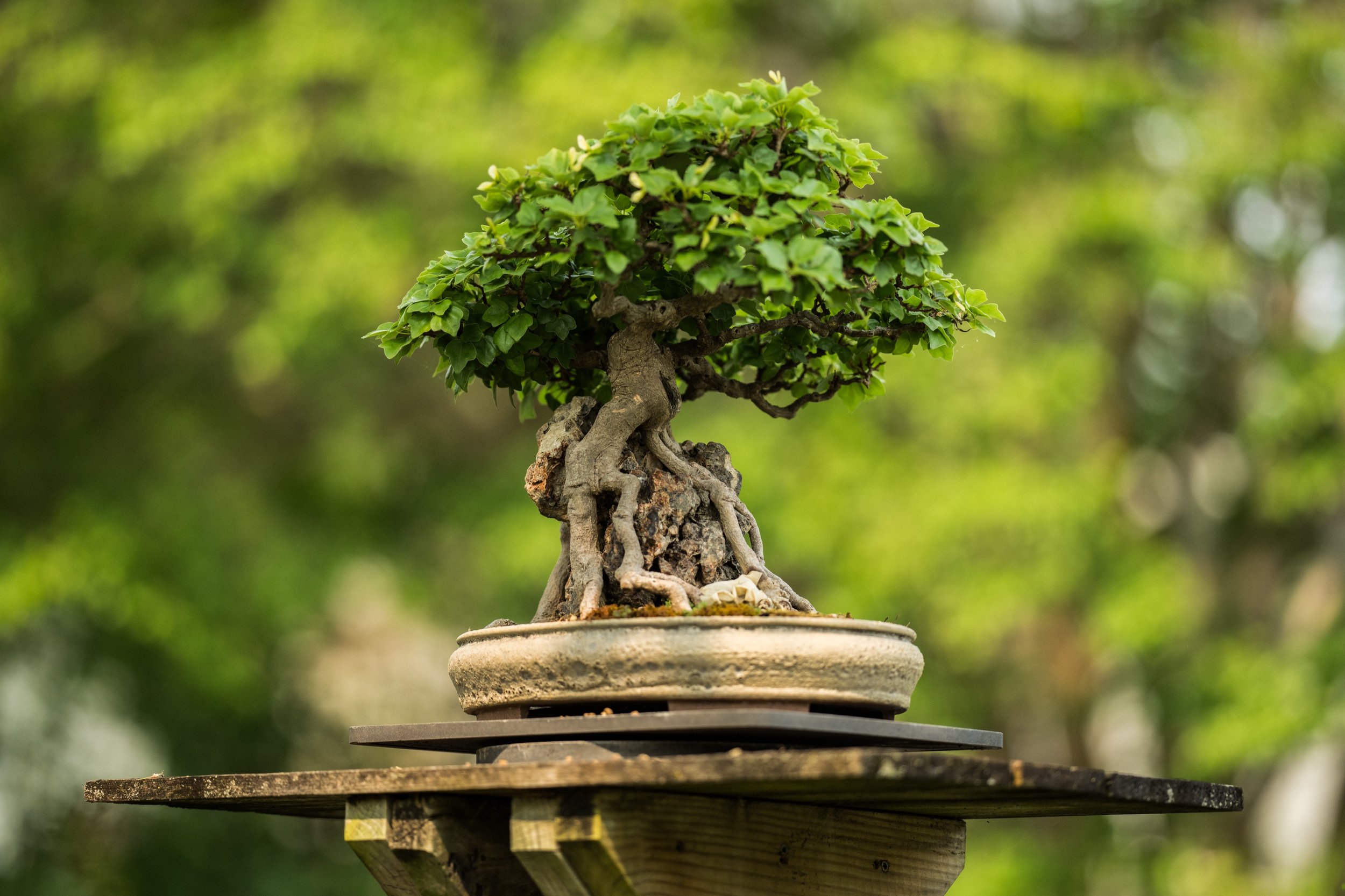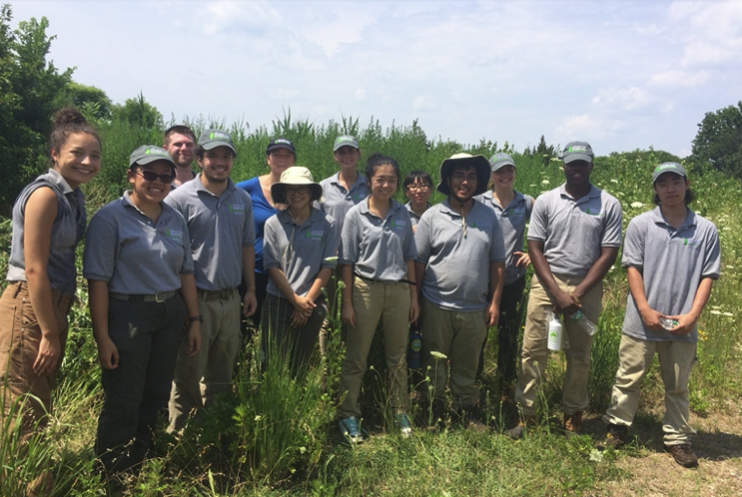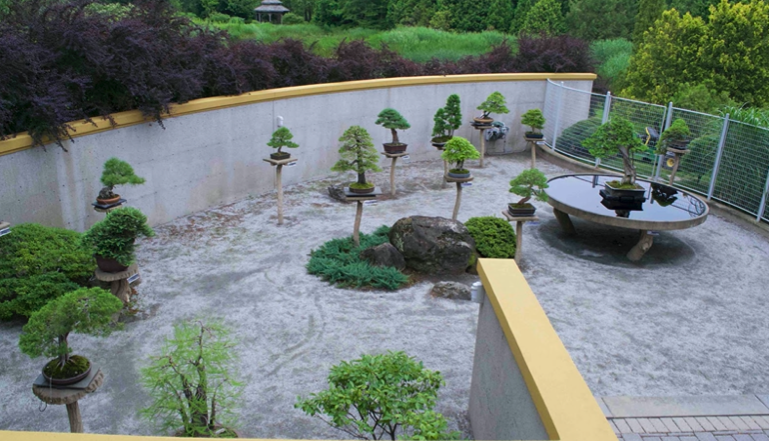In 2009 Harry Hirao posed next to his 2004 gift to the National Bonsai & Penjing Museum, a California juniper that he collected in 1960. Photo from U.S. National Arboretum.
This edition of Influential Bonsai Masters highlights the history of the loving spirit and innate talent Harry Hirao shared with the world.
Hirao co-founded Kofu Bonsai Kai, one of the largest U.S. bonsai clubs, and sat on many bonsai boards across the country, including the National Bonsai Foundation. But his interest and leadership in bonsai wasn’t in full swing until his middle-aged years.
Though he was born in 1917 in Colorado, Hirao temporarily moved to Japan at 8 years old to receive an education and work on the family farm. But he returned to the United States at 16, befriending young bonsai master John Naka, with whom he adventured through the Rocky Mountains to fish for trout.
At the time, Hirao and Naka were so focused on fishing they didn’t realize they were falling in love with the surrounding precious viewing stones and the unique twists and folds in wild trees.
Hirao soon met his wife Chiyo (also known as Alyce), and they married in 1941. Ten years later, the family moved to Huntington Beach, California, where Hirao launched a landscaping and gardening business and grew his family.
Fishing remained a hobby for Hirao for many years, but Naka introduced him to bonsai, guiding him through the Mojave Desert where stout, aging trees grew in harsh environments. Hirao and Naka were granted a digging permit to remove junipers growing in the desert, beginning years of field trips through the mountains and intriguing Hirao in the process of transforming the unassuming trees into beautiful bonsai.
LEFT: Hirao and John Naka discussing Naka’s famous forest planting “Goshin,” or “protector of the spirit”
RIGHT: In 2011, Hirao restyled the juniper he gave to the Museum for the new North American Bonsai Collection.
Photos from USNA
He was eventually nicknamed Mr. California Juniper for his uncanny ability to produce masterpiece bonsai from raw California junipers. But something else in the wild finally caught his eye – stones. Hirao and his wife became enamored with suiseki, or viewing stones, and quickly grew their collection.
Hirao is often remembered as a mountain goat, jumping over ridges and through streams faster than most to find gorgeous stones or unique junipers to turn to bonsai.
Former NBF President Felix Laughlin said he went on a collecting trip with Hirao once, and before he got out of the car at their destination, Hirao was already leaping and running toward the mountains with a backpack slung over his shoulder.
“It was so amazing that in his late age, his 80s at the time, Harry was such a bear of a man and just went at the collecting,” Laughlin said. “He loved it so much, and he did so much for California junipers, which were his babies.”
Jack Sustic, a former National Bonsai & Penjing Museum curator and NBF co-president, held a special and long-lasting relationship with Hirao. After meeting during a West Coast bonsai convention, the two became instant friends. Sustic began traveling to California once or twice a year to collect stones or work on trees with Hirao, absorbing bits of wisdom and building their friendship.
“Harry would say, ‘Don’t rush. If you rush you make mistakes,’” Sustic said. “I always hear his voice when I’m working on a tree or looking for stones – I can hear him telling me to take it slow. Bonsai masters’ advice is often not just for bonsai but for life itself.”
LEFT: At the 2009 Bonsai Festival, Harry directed a bonsai demonstration with assistance from Museum curator Jack Sustic and Museum volunteer LeAnn Duling. RIGHT: Harry Hirao collecting a California juniper from the wild in 2007.
Photos from USNA
Hirao could always make someone feel special, often giving his visitors a viewing stone as a token of appreciation for their time together. Sustic fondly remembers his loving, genuine and kind demeanor, but he said everyone who met Hirao spoke well about the bonsai master.
“Nobody ever had a negative comment or worry about Harry, and that’s a bit rare these days,” he said. “Harry was like a father, best friend, teacher and confidant all wrapped into one for me. A day hasn't passed that I haven't thought of him.”
The Museum received its first American viewing stone from Hirao, and the Harry Hirao Reception Room opened in the Museum’s Yuji Yoshimura center simultaneously with its John Y. Naka North American Bonsai Pavilion.
Two of Hirao’s trees have found a home in the North American collection and one of them remains in the Museum’s auxiliary collection. You can view the trees here and read more about Hirao in our 2007 newsletter, “Happy Birthday Harry!”
Hirao on a collecting trip – photo from Jack Sustic






























